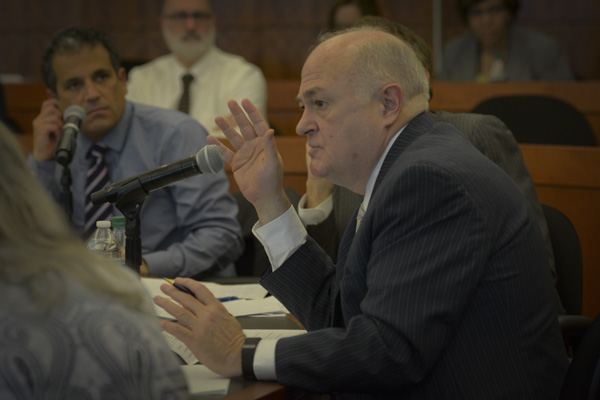Researchers earned an all-time high amount of funding this fall.
Researchers received more than $88 million in funding over the past three months – a 135 percent increase from this time last year, University President Steven Knapp announced at a Faculty Senate meeting last week. Hiring more young researchers and creating new institutes has led to the increase, researchers said.
Researchers also earned 135 new awards this fall, which is a 4.7 percent increase in the amount researchers earned between July and September last year, Knapp said.
“This has been the most active first quarter in the University’s history in research,” Knapp said. “It is a pretty dramatic picture.”
Knapp said it is “remarkable” that grant money has increased substantially, especially since research funding nationally has flattened out. New facilities, like in the Science and Engineering Hall and the Milken Institute School of Public Health building, have helped to recruit top researchers, he added.
“That is a result of strong recruitment of faculty and infrastructure improvements,” Knapp said. “We are bringing in faculty who have a different orientation when it comes to federally sponsored research.”
Researchers still face challenges bringing in grants with facility and administrative reimbursement, which provide financial support for the institution as well as for the researcher, Knapp said.
Recently, federal agencies funding opportunities have become competitive, and some researchers have turned to private funding due to a decrease in federal funds. Last year, Congress awarded an additional $2 billion to the National Institutes of Health in an effort to increase funding for medical research.
Leo Chalupa, the vice president for research, said in an email his office has created programs to support the development and submission of competitive grant proposals by expanding their research enhancement unit to include consultation and grant editing services.
The Office of the Vice President for Research has also provided funding opportunities, like a cross-disciplinary research fund, to support research teams and earn external funding, he added.
“The University’s investments in cross-disciplinary research institutes, faculty recruitment and research facilities are all increasing the competitiveness of grant proposals submitted by GW investigators,” Chalupa said.
This year’s figures represent awards that GW received official notification of during the period from July to September, but many of the awards are multi-year projects that will span three to five years, Chalupa said. He added he attributes the increase in funding to a number of large awards with proposed budgets of more than $1 million that were announced this quarter and the addition of top researchers.
“OVPR has worked closely with the provost and deans to recruit top research faculty at all levels,” Chalupa said. “The hiring of these individuals has been a significant factor in increasing GW’s research profile.”
Chalupa said preliminary data for the first quarter show that the University’s research expenditures, which represent actual spending attributed to external funding sources, are positive.
“These increases continue a multi-year trend and reflect the University’s commitment to its research mission,” Chalupa said.
GW was selected to lead 18 institutions with a five-year grant from the National Institutes of Health to develop a cure for HIV with a $28 million grant in July and also received a $900,000 grant in August to create the world’s most efficient solar panel.
Keith Crandall, director of the Computational Biology Institute, said GW recently has hired more young faculty members with a focus on research, and OVPR provides in-house grants that help researchers receive funding for preliminary data, which strengthen their grant proposals.
“GW has consistently been increasing the research portfolio in a flat budget and decreasing acceptance rate for grants nationally, so it is especially impressive given that reality,” Crandall said. “Those starter grants are really essential, and OVPR has a number of those in a variety of ways.”
Patti Gravitt, a global health professor at the Milken Institute School of Public Health, received a $2.6 million grant this month to conduct a cervical cancer prevention field study in Peru.
Gravitt said that she was a part of a new senior faculty recruitment project initiated by Lynn Goldman, dean of the public health school. She said the recent grant was submitted at her former institute but was approved before she came to GW.
“Milken and OVPR worked with me and the subcontracting institutions to transfer this grant award to GWU as the primary awardee,” Gravitt said. “The school is committed to providing incentives for their faculty to boost collaboration and development of successful research programs.”







